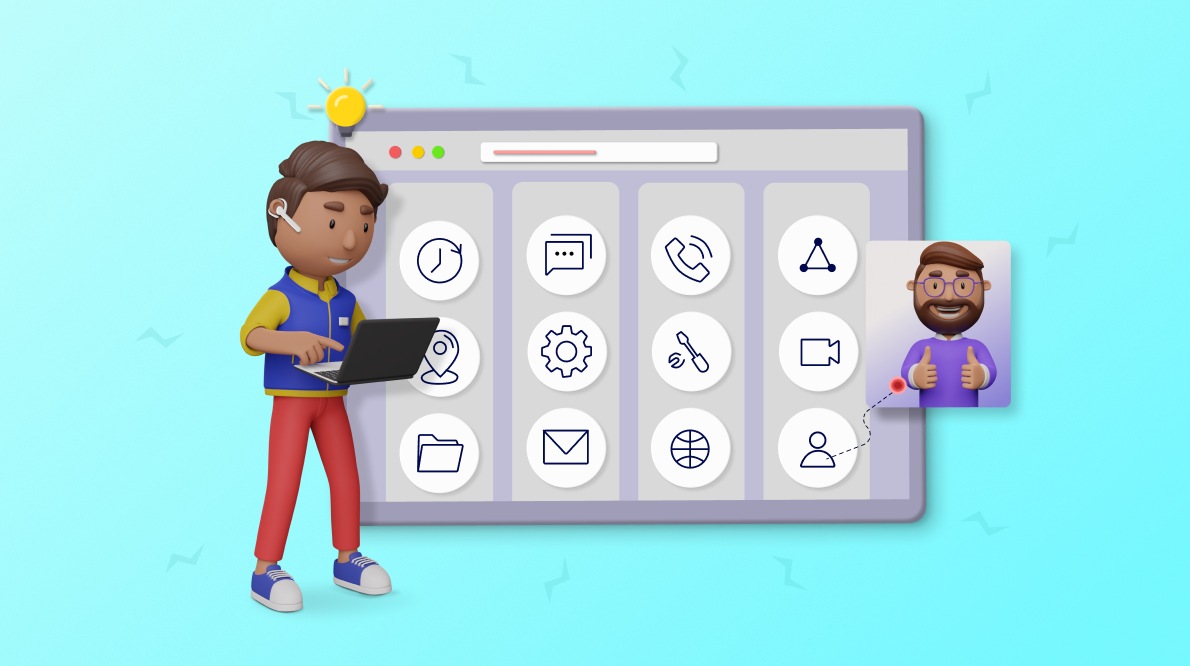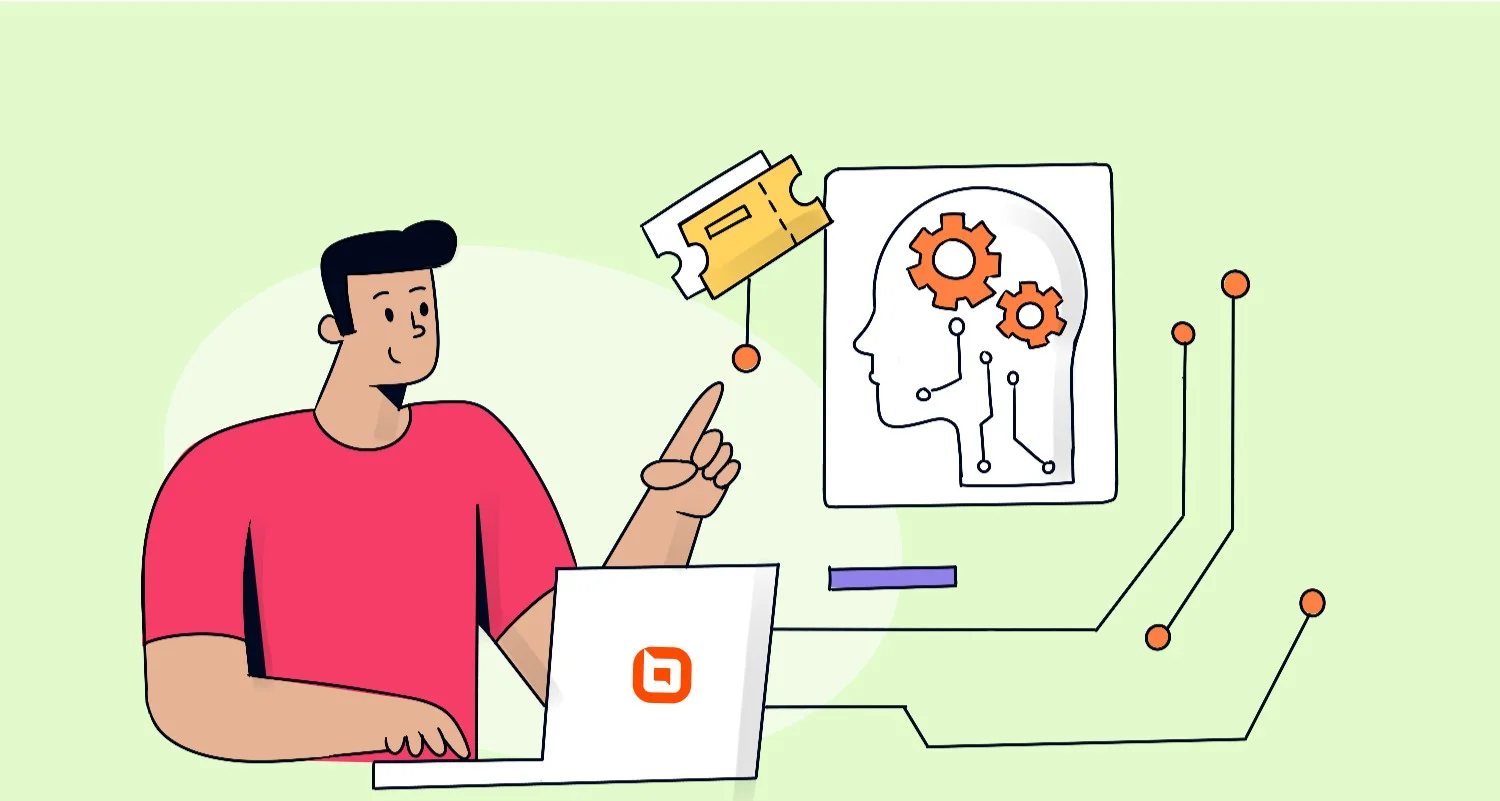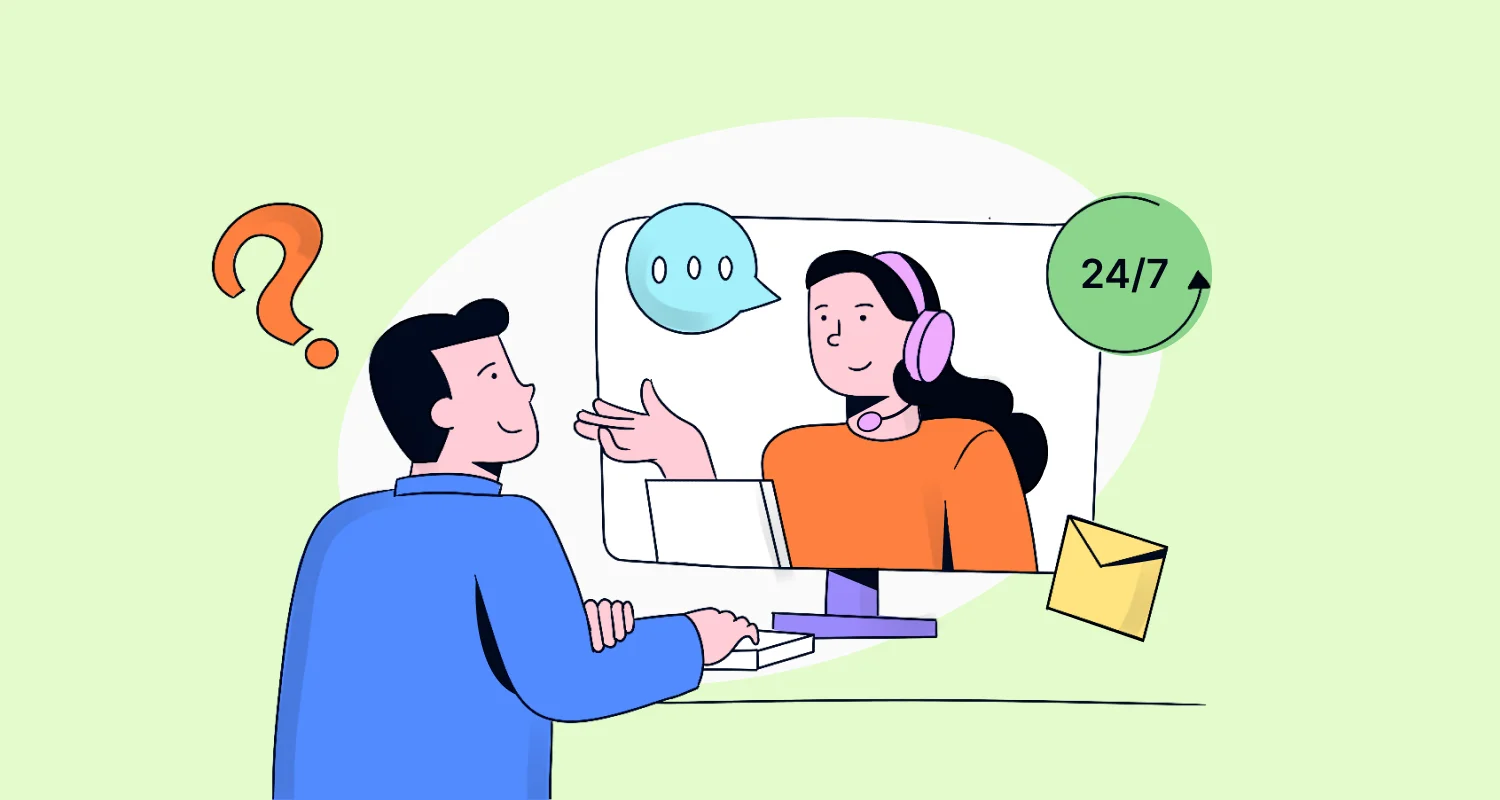Many businesses fail to meet their customers’ expectations by waiting for customers to reach out first, creating a barrier between themselves and their customers.
This leads to a damaged customer service reputation and a poor customer experience, making customers feel insignificant.
Businesses should instead implement a proactive customer service model, which includes anticipating and addressing customer needs before customers even realize it.
Be the first to act and offer proactive customer support to build customers’ trust, establish your brand as their preferred choice, and improve customer relationships.
What is proactive customer service?
Proactive customer service involves businesses taking the lead in anticipating customers’ needs and issues through various channels and coming up with solutions before issues occur.
Businesses can apply proactive customer service in different ways. For example:
- By providing immediate solutions and reaching out before issues occur.
- Informing customers of any delays in delivery.
- Immediately alerting customers when there is scheduled maintenance or product troubleshooting.
The focus of support is on resolving customer issues and providing high-quality assistance. This helps businesses identify potential issues and provide timely and relevant information or solutions.
Ultimately, this fosters stronger customer relationships and ensures a positive customer experience.
Proactive vs reactive customer service
| Proactive customer service | Reactive customer service |
|
|
|
|
|
|
In the customer service field, there is a difference between proactive and reactive approaches. The key to understanding the distinction is recognizing who initiates the interaction.
If your customers’ expectations aren’t met, they may be frustrated with your brand. Even if there’s a solution, the issue could be complex and require a lot of time and effort to resolve.
Proactive customer service is also a strategic and customer-centric approach that anticipates and addresses customer needs.
It creates a positive and memorable experience, fostering loyalty and long-term success.
Proactive customer service is beneficial, but businesses cannot anticipate all customer needs. The ideal approach is to make use of both proactive and reactive strategies.
Pinpoint areas where proactive customer service can help, and use reactive customer service to respond to inquiries, provide answers, and guide customers to success.
Why should you provide proactive customer support?
Companies that prioritize their clients often achieve impressive results. Adopting a proactive approach to customer service allows businesses to address potential issues before customers have to seek assistance.
This also allows support teams to detect critical issues or problems early, facilitating timely resolution and preventing escalations.
Additionally, companies also demonstrate a customer-centric approach when they aim to deliver an exceptional experience by predicting and meeting customers’ needs.
Proactive customer service reflects a dedication to outstanding service and contributes to an improved net promoter score.
Effective ways to deliver proactive customer service
There are strategies that can be employed to effectively provide proactive customer service. They include:
1. Understanding your customers
To implement proactive customer service, it’s crucial to first understand your customers. This means investing time to know them better before anticipating their needs.
This understanding will form a foundation for enhancing your proactive customer support abilities.
This can be achieved by conducting surveys, actively listening to customer inquiries on social media, and monitoring feedback and reviews on dedicated community forums.
It allows businesses to provide excellent customer experiences while identifying customer challenges, what motivates them, and their pain points.
Having this deeper understanding will enable you to proactively meet customers’ most important needs, thereby boosting satisfaction levels.
2. Regularly contacting customers for feedback
One common mistake that businesses often make is assuming they know what their customers want and need.
Regularly collecting feedback can reveal patterns such as recurring complaints from potential buyers or frequent complaints from existing customers.
To obtain a more comprehensive understanding of your customers and their needs, it is recommended to regularly conduct customer surveys.

These surveys can identify common issues faced by customers and provide valuable insights for product or service enhancement.
Therefore, it is important to include open-ended questions in your survey, such as “what problems are you currently facing with our product?”
Feedback can be collected through various means such as:
- Interviewing current customers to understand their issues and ways to enhance your product or service.
- Examining information from your help desk software to identify and address common problems.
- Monitoring your company’s social media pages for user comments and remarks about your brand or products and services.
- Sending surveys to former customers using tools like web forms or community forums.
This will provide you with the understanding required to implement proactive customer service measures that effectively address actual problems your customers are experiencing.
3. Interact with your product and services
Interacting with a product feature is a proactive approach to customer service. This strategy sets customers up for success by suggesting enhancements or additions that could enhance their experience.
When launching a new product or feature, it is essential to ensure thorough internal testing.
Employees are often the best source of detailed feedback because they are highly familiar with the product.
They can proactively identify potential issues customers might encounter and find solutions to prevent any inconvenience beforehand.
By consistently foreseeing and tackling your customers’ needs and desires, you can tailor the customer experience and make customers feel valued.
4. Educate your team to be proactive
The key to proactive customer service is having competent and accountable support teams. This includes everyone in your organization, as their insights and experiences can contribute to effective strategies.
Training your support teams to anticipate and address customer queries, staying updated on trends, and focusing on proactive service, enhances customer satisfaction.

Establishing an internal knowledge base and educating employees on proactive support can make a significant difference in how customers perceive your brand.
Encouraging ideas from across your organization can greatly enhance customer experience.
5. Be honest and transparent
Concealing problems can be one of the most detrimental actions. During times of crisis, it is important to be proactive and contact your customers before they become aware of an issue.
Modern consumers want sincere relationships with brands they support. According to a study by Abby McCain, 66% of customers consider transparency as one of the most appealing characteristics in a brand.
Therefore, a key proactive support strategy is to acknowledge errors and inform customers of issues before they discover them on their own.
Apologize to and notify customers of technical glitches promptly to earn their trust. Be transparent and honest from the start. Offer timely solutions, discounts, or refunds if necessary.
Keep customers informed about your actions to address their problems. Reassure them that the issue won’t recur.
Provide contact information for questions or feedback. This approach shows commitment, honesty, and the ability to deliver high-quality results.
6. Develop a knowledge base for self-service
According to the Harvard Business Review, 81% of all customers try to take care of issues themselves before reaching out to live customer support. The optimal service you can provide for a customer is to empower them to serve themselves.
Establishing a well-structured knowledge base that includes frequently asked questions (FAQs), manuals, how-to guides, videos and more, is a significant step toward implementing proactive customer service.
By using a self-service portal and taking the initiative, customers can actively seek answers to their questions and solutions to their problems at their convenience.
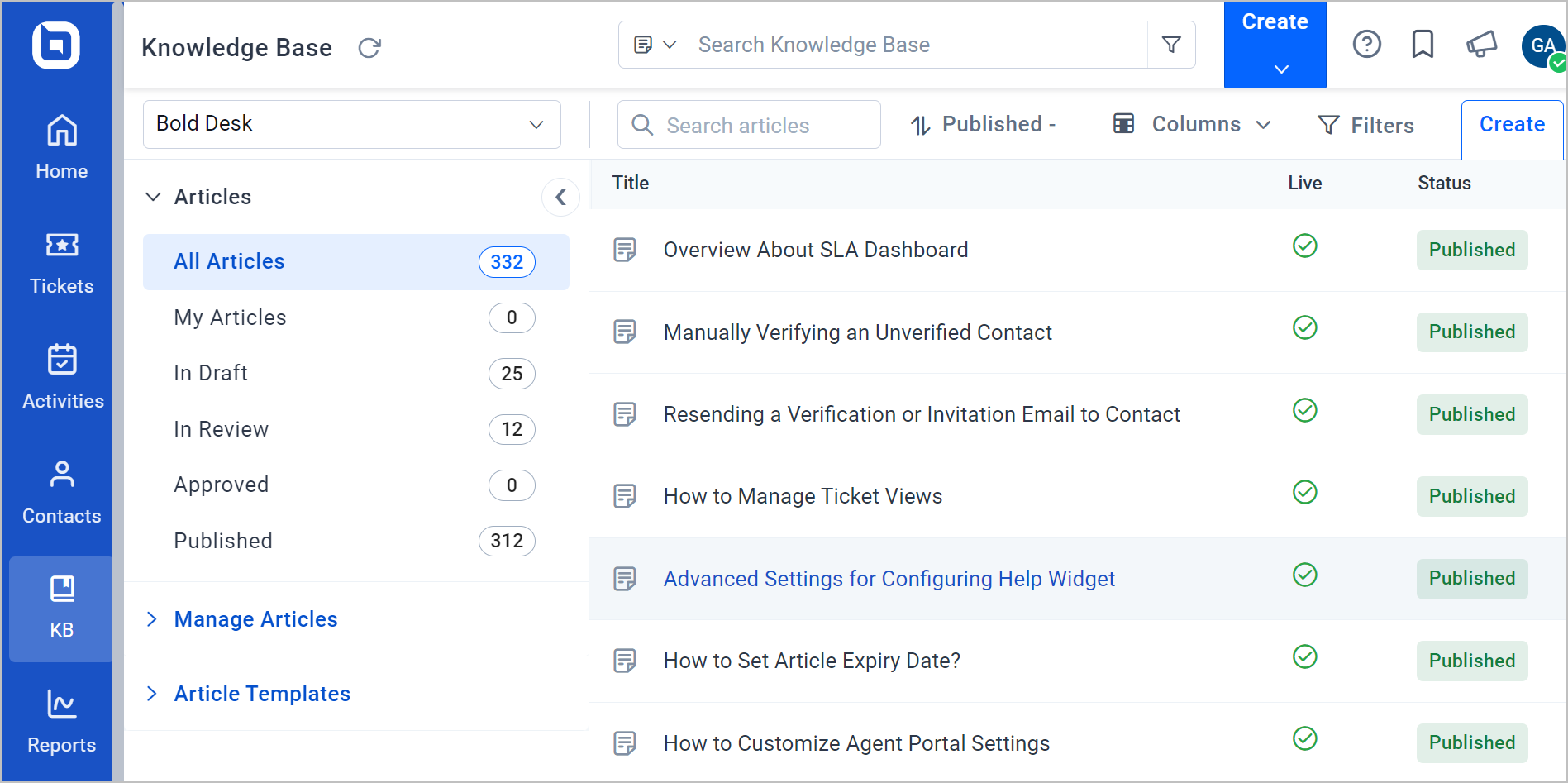
Businesses must ensure that the content on their website is easily accessible by avoiding these unusual mistakes.
- Ensure unrestricted access to information
- Remove unnecessary and unhelpful subjects to create a clutter-free environment
- Provide a search option for ease of navigation
7. Reach out and engage with customers through social media
Businesses should have a social media page where they can share any news or new updates.
Annabelle Nyst’s study indicates that 62% of organizations utilize social listening programs to gain a better understanding of their audiences.
Businesses should actively engage with customers on online community forums, Instagram, and other social media platforms to potentially prevent the need for direct support contact.
Understanding the target audience helps determine the preferred social media platform for information.
Support agents can be assigned to platforms like Facebook, WhatsApp, X, or YouTube to engage with customers and address concerns.
Businesses should assign respective support teams to provide a quick response to customers on different social media platforms.
Engaging with customers who mention your brand on social media, irrespective of the context of the conversation, can also be beneficial in addressing their complains or issues they raise. Using social media management tools can help monitor comments and respond proactively.
Following relevant keywords and hashtags on social media platforms can also facilitate proactive customer support.
What are the benefits of proactive customer care?
Implementing proactive customer service strategies can greatly contribute to the success of a business. Here are the key benefits:
Improved customer satisfaction
Customers won’t forget errors unless they are resolved with superior and proactive customer care. However, mistakes do happen, but exceeding customers’ expectations is the key to redemption.
When you proactively address customers’ dissatisfaction with your company or brand, it reduces the likelihood of them reaching out to you.
Reduced support calls
A customer service approach that prioritizes responsiveness necessitates the constant availability of support agents.
The exact time when customer issues will occur is uncertain. This can pose difficulties for a customer service team in efficiently handling support tickets and inquiries.
Investing in proactive customer support proves to be a successful tactic for reducing tickets.
By minimizing common issues, support teams can dedicate additional time to addressing complex customer problems before they escalate.
Enhanced customer retention rate
Through offering proactive customer service, support teams can handle all customer problems, ensuring no support ticket goes unnoticed.
This approach enables businesses to emphasize the importance of the customer, and it conveys that customer’s sentiments and experiences are valued.
The act is straightforward and doesn’t require much effort, yet it boosts customer loyalty, resulting in a higher customer retention rate.
When a customer has a positive experience with a brand, the chances of returning or recommending the business to their friends and family are very high.
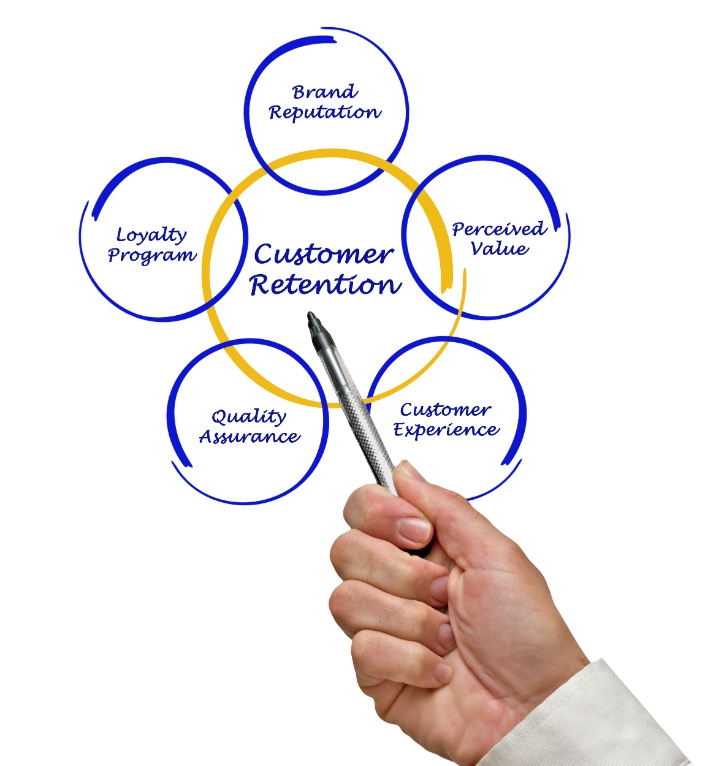
Increased brand reputation
A brand that follows a proactive customer service idea and consistently maintains it, is one that develops a favorable reputation among its customers.
According Helplama survey revealed that 86% of consumers tend to have more loyalty towards brands that demonstrate a thorough comprehension of their priorities and preferences.
By anticipating and solving customer problems before they reach out through social media, you’ll impress customers and make them feel valued. Thus, they may leave positive comments about their satisfaction with your services.
Information provided on social media by customers can be internally shared with your business partners to help agents identify recurring issues and concentrate on solving them.
Proactively addressing your customers’ issues will enhance your brand image.
Better decision-making
The tools utilized for tracking customer behavior, like customer service surveys, offer a crucial source of feedback. This is essential for any business aiming for consistent improvement.
Customer feedback can be utilized to make better-informed product decisions and to improve product features.
Additionally, the insight gathered can be used to develop resources that can address common issues without needing to contact a support agent.
Boosts revenue/sales
When customers are considering a company’ product or service, your support team should proactively approach customers and attempt to convince them to complete a purchase by providing the best offers and explaining to them how it works.
By also putting substantial effort into swiftly addressing customers’ issues, their appreciation for your efforts will increase, and their gratitude for your endeavors will grow.
Numerous businesses have discovered that proactive customer care, which includes immediate interaction and engagement, enhances sales.
Frees up your support team
Initiating proactive support by providing a self-service option, can greatly reduce the number of support tickets, enabling customers to resolve their issues independently.
This allows the support team to dedicate more time to high-priority inquiries and complex tasks.
Dealing with fewer tickets allows support teams to focus better and experience less stress, enhancing their satisfaction and positively influencing their customer service.
Builds customer loyalty
By implementing proactive customer service, you can cultivate loyalty by reaching out to your customers before they seek help, offering a knowledge base and providing fantastic experiences to them.
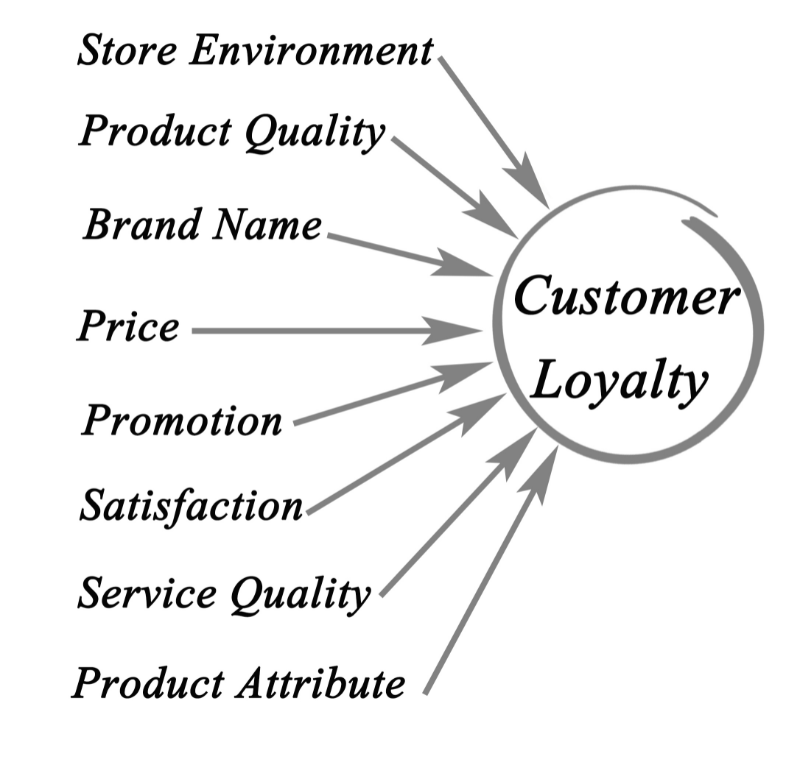
This approach offers more opportunities to address customer problems, and customers will feel that their views are valued compared to reactive support.
Proactive customer service examples
Following are some successful proactive customer service examples.
BoldDesk’s new product release notifications
At BoldDesk, we use a proactive approach to keep our users informed about new product releases.
Whenever a new feature or update is rolled out, BoldDesk sends targeted emails that highlight the latest enhancements and functionalities that users can employ.
This proactive communication ensures that users are always aware of changes and lets them make the most of the customer service software’s capabilities.
Delta Air Lines’ flight rescheduling
Delta Air Lines takes proactive steps to reduce the inconvenience caused by flight delays or rescheduling.
Delta proactively notifies passengers about flight changes, cancellations, and delays via SMS or email. They provide alternative flight options and allow passengers to rebook without having to contact customer service.
Amazon’s personalized recommendations and delivery alerts
Amazon uses data analytics to recommend products based on past customer purchases and viewing history. By proactively suggesting relevant items, Amazon enhances the shopping experience of its users.
Additionally, the online retail platform notifies customers in advance about any delivery delays. This transparency helps manage expectations and reduces frustration.
Improve your customer relationships with proactive customer service
Customer service can be difficult, and assessing its value can be even more intricate. Adopting a proactive customer service strategy can help you progress and enhance communication methods to better comprehend your customers.
By resolving their issues promptly, you can establish long-term relationships.
Utilize various platforms like community forums, social media, and email ticketing systems to connect with consumers instantly.
Successful proactive customer service builds trust and loyalty, enhancing your brand’s image.
Make use of both reactive and proactive customer support to retain and attract more customers.
Schedule a live demo to see how BoldDesk can enhance your business and proactive customer service.
Start a free trial to explore its many features. If you have any questions about the product and its capabilities, feel free to contact the BoldDesk support team.
Related articles



 Email Ticketing System
Email Ticketing System